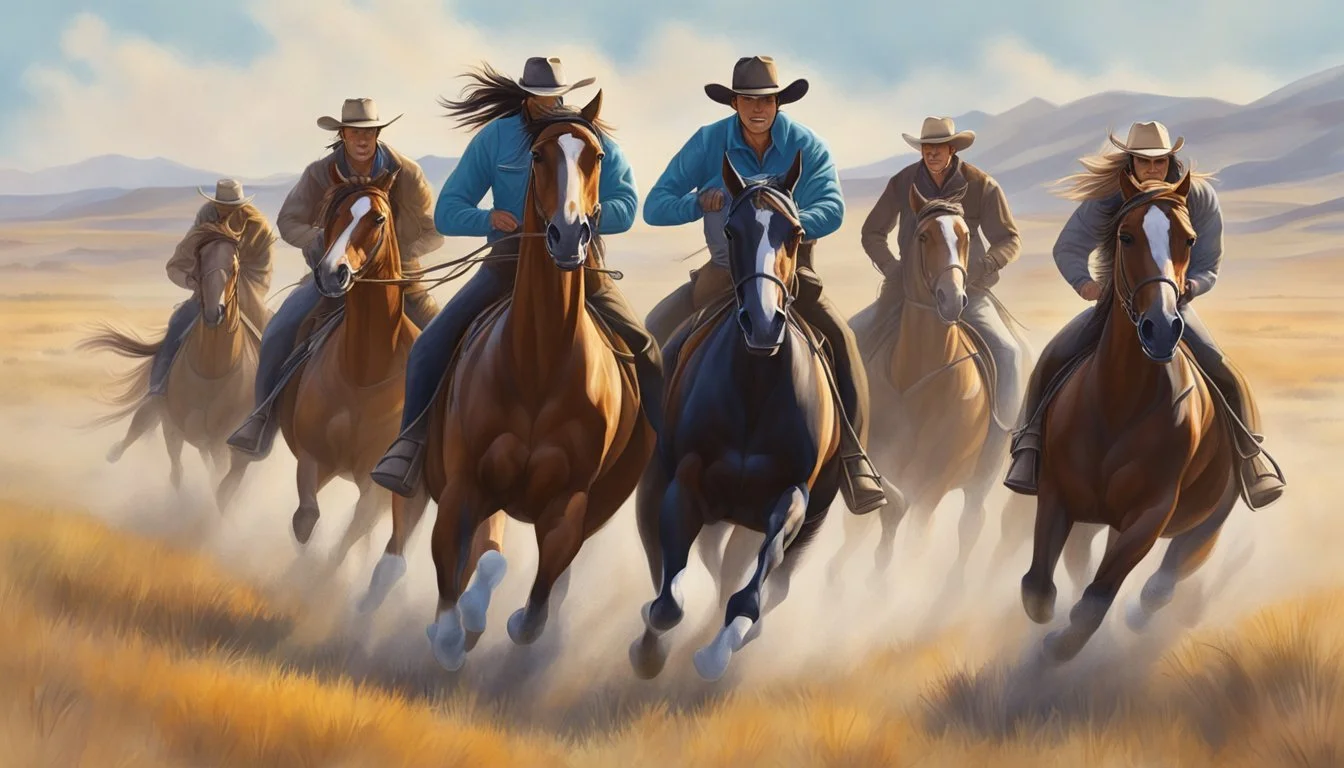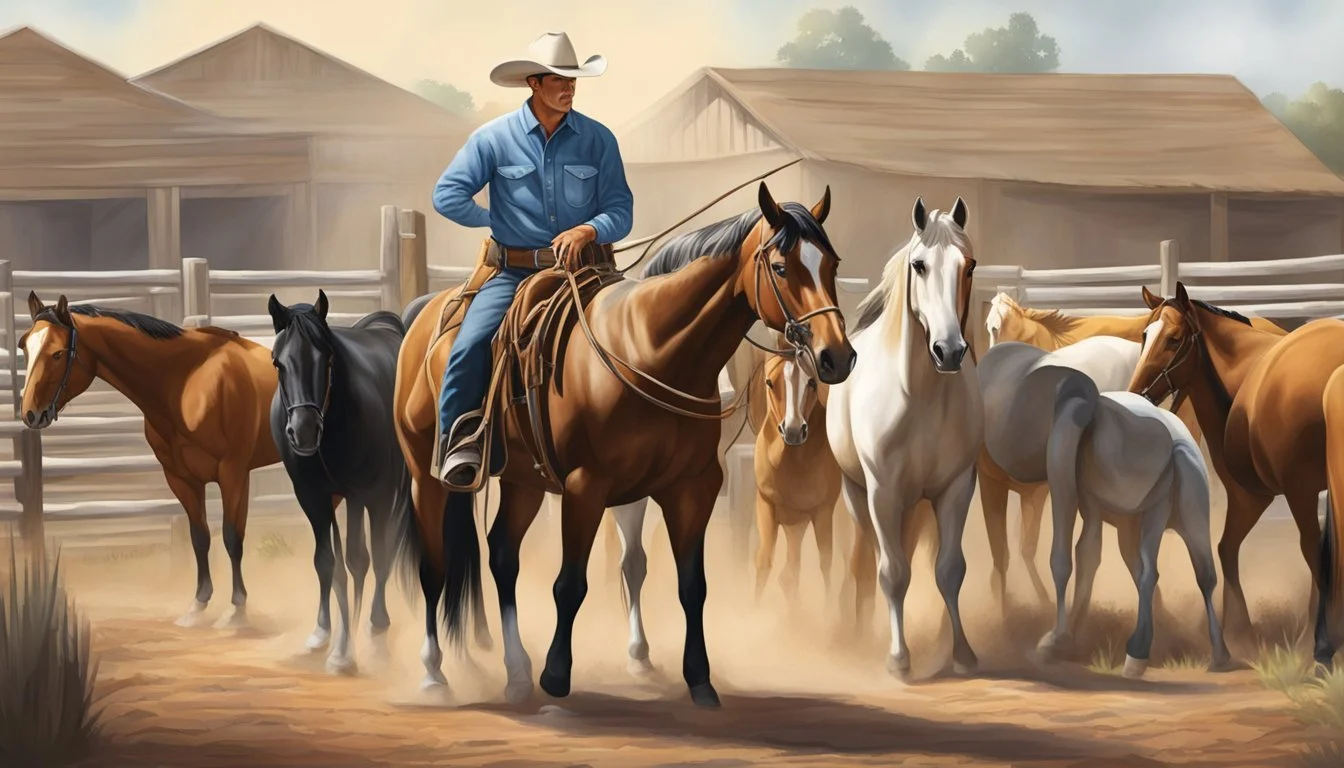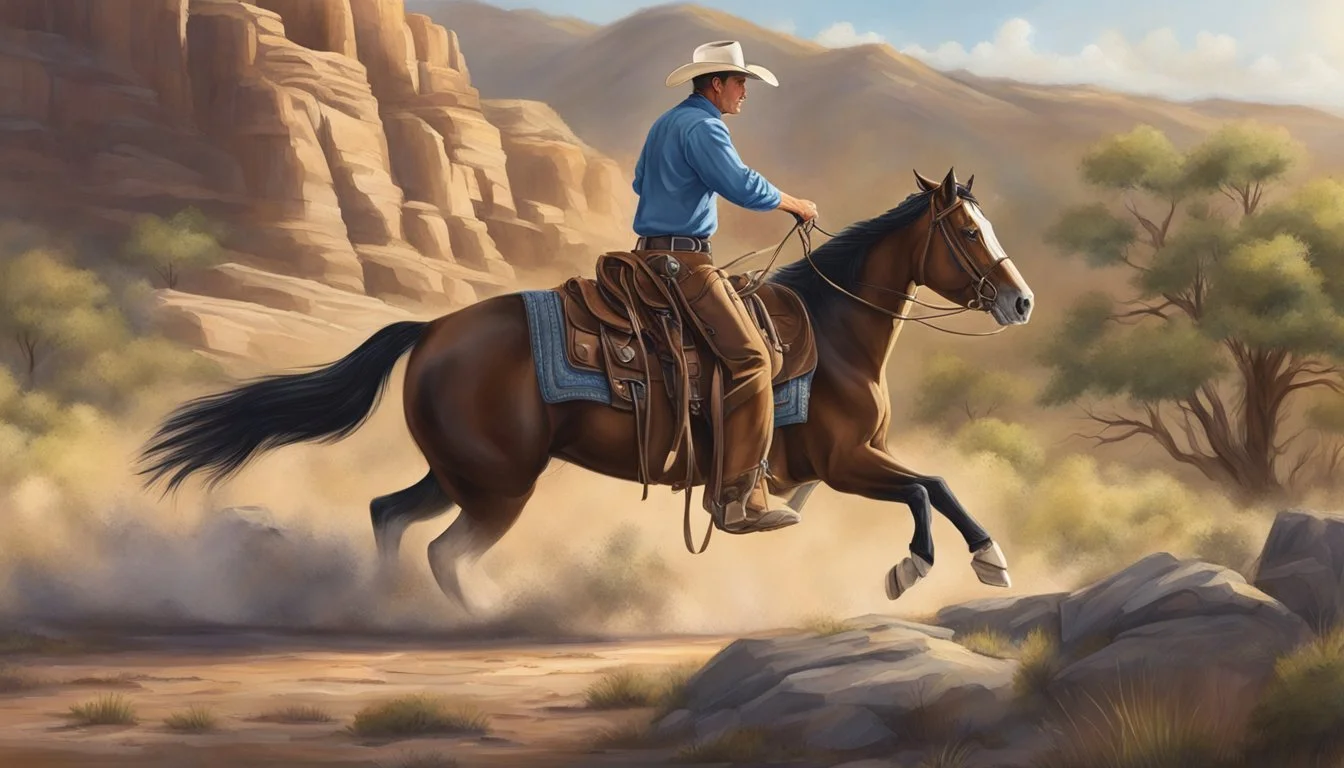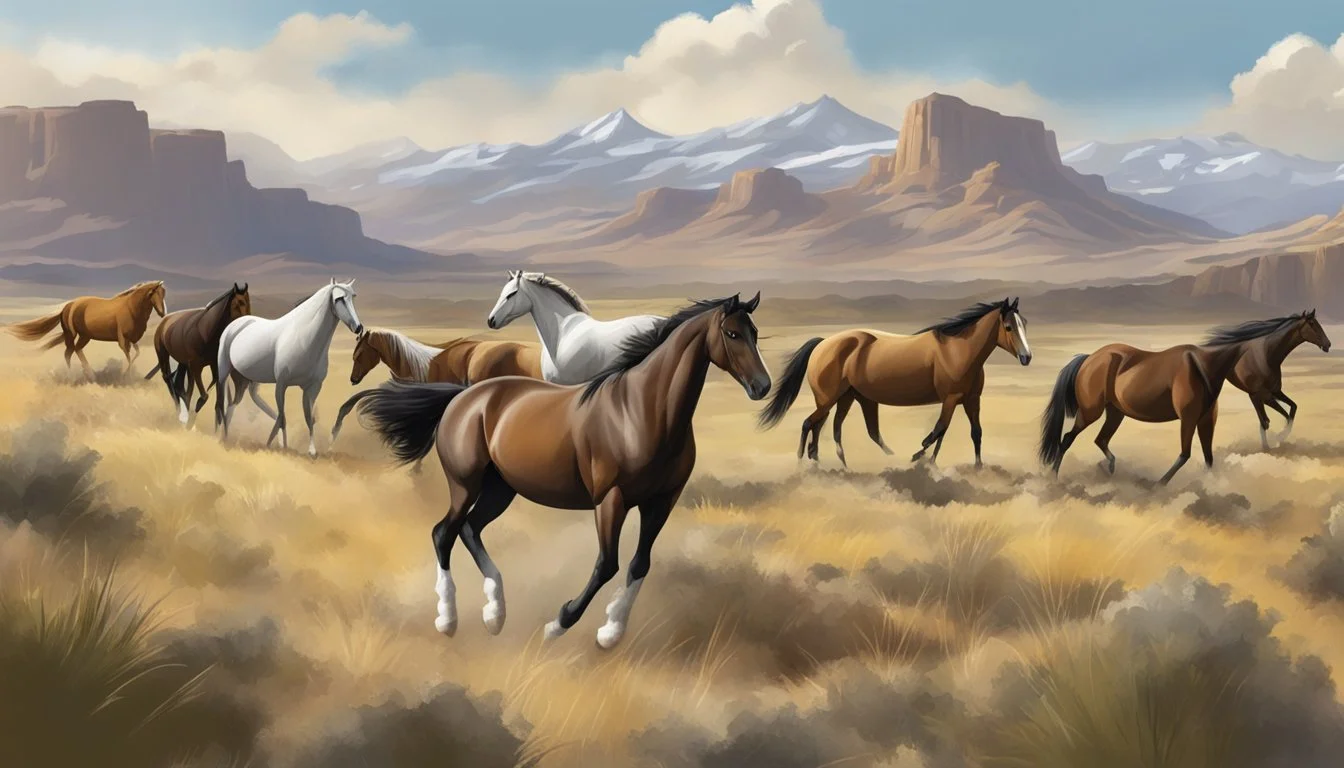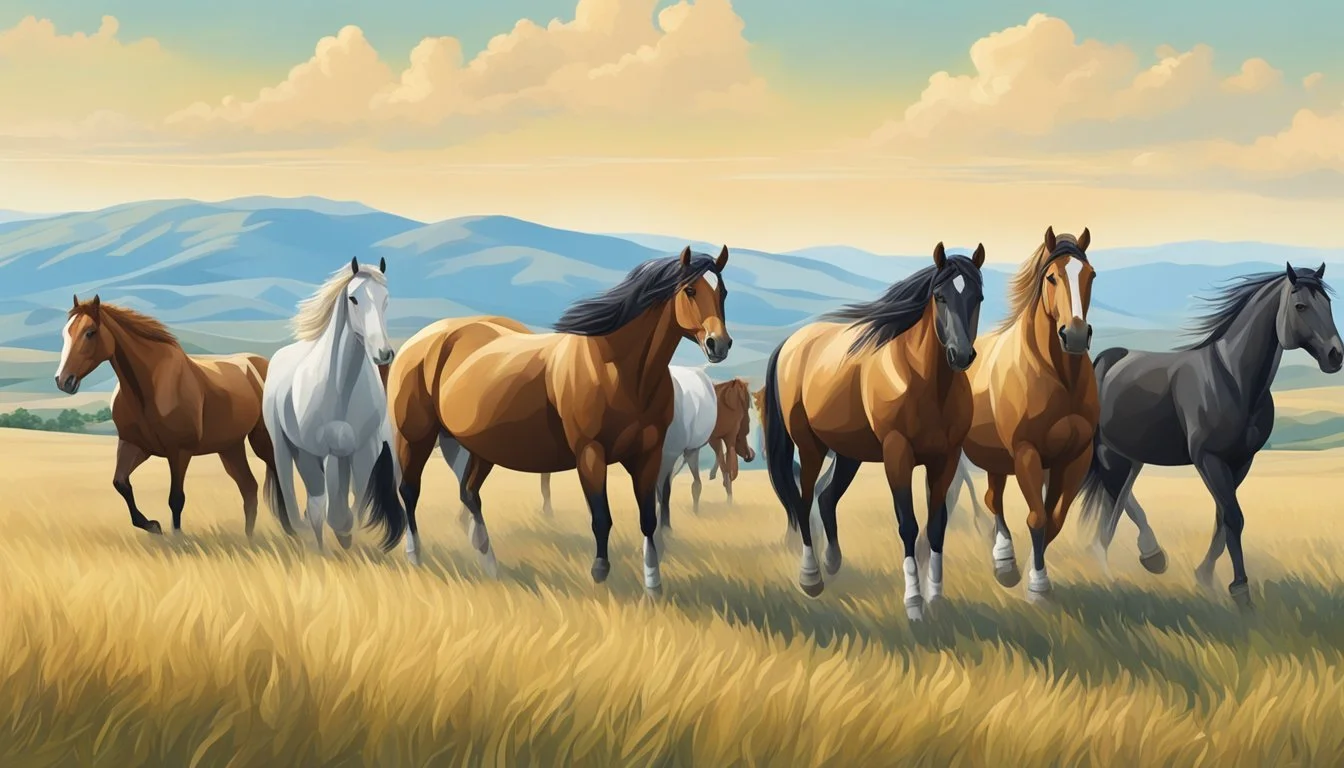The Best Horse Breeds for the Cowboy Lifestyle
A Guide to Trusty Steeds
The cowboy lifestyle is deeply ingrained in American culture, symbolizing a blend of hard work, dedication, and a deep connection with the land. Central to this way of life is the horse, a steadfast companion on whom the cowboy relies for a multitude of tasks. In the expansive ranches and the tough terrain of the West, not just any horse will do. Certain breeds have risen to prominence for their strength, agility, and temperament, making them well-suited to the demands of cowboy life.
Among the breeds that stand out are the American Quarter Horse, known for its quick sprints and sharp turns, and the Morgan Horse, valued for its versatility and endurance. Each breed presents characteristics honed for specific challenges, whether it's herding cattle or covering long distances. The physical abilities of these horses, combined with their trainability and resilience, make them ideal for the varied responsibilities that define the cowboy's daily routine.
While breeds like the American Quarter Horse and Morgan were developed on the North American continent and are closely associated with the American cowboy, other breeds also play a role. The Arabian, for example, contributes endurance and speed, and draft breeds like the Clydesdale bring power and a calm disposition. In the hands of a skilled cowboy, these horses are more than mere tools; they are partners in a way of life that continues to capture the imagination and respect of people around the world.
Defining the Cowboy Lifestyle
The cowboy lifestyle is deeply rooted in the tradition of ranch work and working cattle. It involves practical skills that are critical for surviving and thriving in the often harsh, rural environments where these individuals spend their days. Ranch work is physical and demanding, requiring a durable and responsive ranch horse that can adeptly handle a variety of tasks.
In the realm of western riding, cowboys rely on horses that possess the ability to maneuver quickly and with precision—a necessity for tasks such as herding cattle or performing in rodeos. The western discipline encompasses specific styles of riding that are tailored to the needs of ranch work, focusing on the synergy between rider and horse.
The cowboy's daily activities might include:
Herding: Moving livestock from one location to another.
Branding: Marking cattle for identification.
Roping: Catching cattle with a lasso for various purposes.
Fencing: Building and repairing barriers to keep livestock within designated areas.
Here are common characteristics of a typical ranch horse:
Trait Description Agility Ability to make quick and sharp movements. Stamina Endurance for long hours of work. Strength Physical power for pulling and carrying. Temperament Calm yet alert demeanor under pressure. Trainability Capacity to learn and adapt to tasks.
These qualities allow the cowboy to perform their duties effectively, demonstrating why the right horse breed is integral to the cowboy lifestyle. This lifestyle is about resilience, skill, and the profound connection between the cowboy and their equine partner.
Characteristics of Ideal Cowboy Horse Breeds
Selecting the appropriate horse breed for the cowboy lifestyle hinges on recognizing specific traits that align with the demanding requirements of ranch work. These characteristics ensure the horse is not only a reliable partner but also an asset in the varied tasks a cowboy faces daily.
Temperament and Work Ethics
Ideal cowboy horse breeds exhibit a calm and even temperament, crucial for the unpredictability of ranch work. They demonstrate a strong work ethic, often showcasing:
Patience: Essential during long hours of work.
Willingness: They show readiness to follow commands.
Focus: A capacity to remain unflustered by distractions.
Physical Attributes for Ranch Terrain
The breeds suited for cowboys possess physical features tailored to the rigors of the terrain. Key attributes include:
Sturdy Build: Muscular, compact bodies capable of enduring hard work.
Surefootedness: Stable footing in varied terrains, reducing the risk of injury.
Versatility and Trainability
Versatility and trainability are paramount for a successful cowboy horse. They must display:
Adaptability: Able to perform a wide range of tasks from cattle herding to trail riding.
Trainability: High levels of intelligence and ability to learn new skills efficiently.
Popular Horse Breeds for the Cowboy Lifestyle
When it comes to the cowboy lifestyle, certain horse breeds have proven themselves essential partners. These breeds have been selected for their durability, agility, and temperament, making them ideal for the various tasks required by life in the West.
American Quarter Horse
The American Quarter Horse is renowned for its short-distance sprinting ability, compact body, and versatility. This breed excels in rodeo events and cattle work due to its quick reflexes and powerful muscles.
Appaloosa
Appaloosas are distinguished by their unique spotted coats and sturdy builds. Their history is tied to the Nez Perce Native American tribe, who bred them for their endurance and sure-footedness, making them reliable for long rides.
Mustang
Mustangs, often referred to as the symbol of the American frontier, are feral horses with a lineage dating back to Spanish explorers. These horses are celebrated for their independence, strength, and resilience.
Morgan Horse
The Morgan Horse is one of the earliest horse breeds developed in the United States. Morgans are known for their compact, muscular frames and are often sought after for their versatility and amiable nature.
American Paint Horse
Distinct for their colorful coat patterns, American Paint Horses are not just about looks. They share a common ancestry with Quarter Horses and Thoroughbreds, resulting in a breed that’s both visually striking and competent in working tasks.
Each of these breeds brings its own strengths to the cowboy way of life, from the dependable stamina of the Mustang to the Morgan's multi-tasking prowess. While their physical attributes and histories differ, their ability to work alongside a cowboy unites them.
Specialized Roles and Tasks
The cowboy lifestyle involves specific equine roles and tasks, each necessitating horses with particular skills and attributes. Cowboys require horses that excel in agility, speed, and temperament for various activities such as cattle handling, trail riding, and competitive events.
Cattle Drives and Roping
For cattle drives and roping, Quarter Horses stand out due to their exceptional agility and sprinting capabilities. These tasks demand quick starts and stops, as well as swift changes in direction, making Quarter Horses' compact and muscular build ideal.
Cutting: A skill where the horse must isolate a cow from the herd and prevent it from returning.
Team Penning: A team event requiring horses to cooperate to sort and pen specific cattle within a time limit.
Trail Riding and Scouting
While on trails, cowboys scout for cattle or navigate challenging terrains, hence requiring versatile and sturdy breeds. Morgan horses, known for their stamina and strength, are a preferred choice.
Trail Riding: A horse must traverse long distances, showcasing its durable and steady nature.
Stamina and a calm demeanor are essential for extended periods spent in the saddle, often over rough landscape.
Racing and Competition
Racing and competitive events like barrel racing and reining require horses with explosive speed and acute responsiveness. The American Quarter Horse again is a favored breed due to its strong build and fast acceleration.
Barrel Racing: Involves a timed event where horses maneuver around barrels in a cloverleaf pattern.
Reining: Horses perform a series of circle and straight-line patterns at a gallop, showcasing their ability to make quick turns and stops.
Training and Handling Considerations
Selecting the right horse breed for the cowboy lifestyle is one aspect; understanding their training and handling is another critical factor. Effective training maximizes a horse's natural instincts such as cow sense, and proper handling ensures their endurance and trainability are put to good use in ranch activities.
Behavior and Cow Sense
Cow Sense: A horse with strong cow sense can intuitively read and anticipate cattle movements, which is vital for tasks like herding and sorting. This ability is not only bred into horses but also honed through consistent training.
Training for Behavior: Regular exposure to cattle and varied environments will help maintain a horse's calm demeanor and responsiveness, essential traits for the unpredictable nature of cowboy work.
Conditioning for Endurance
Physical Fitness: Horses like the American Quarter Horse are known for their stamina and need regular exercise regimes that build and maintain muscular strength and cardiovascular health.
Endurance Training: Long rides that increase in intensity over time will condition horses for the lengthy and strenuous activities associated with cowboy tasks.
Adaptation to Western Tack
Tack Familiarity: Introduction to Western-style tack, including saddles, bridles, and bits, should begin early to ensure horses are comfortable and performing optimally.
Handling Techniques: The cowboy's handling skills, especially with the reins and leg cues, must align with the tack used to achieve precise control and guidance during ranch operations.
Care and Maintenance for Longevity
Ensuring the well-being of horses requires a deep understanding of their needs. The right care can lead to a robust and enduring herd, especially for horses in the cowboy lifestyle, which often includes resilient breeds accustomed to tough conditions.
Diet and Nutrition for Hardy Breeds
Hardy breeds, such as the American Quarter Horse, flourish on a diet that's high in fiber and has adequate protein. It's essential to provide:
High-quality forage: Alfalfa or grass hay should be the base of their diet.
Balanced grains: If extra calories are needed, consider oats or commercially prepared pelleted feeds.
Vitamins and minerals: Supplement their diet with a mineral block or pre-mixed supplements to prevent deficiencies.
Grooming and Health Monitoring
Regular grooming not only keeps a horse's coat in prime condition but also serves as an opportunity to monitor their health. Proper grooming includes:
Daily brushing: This promotes a healthy coat and helps identify any skin issues or injuries.
Hoof care: Regular cleaning and trimming prevent hoof diseases, which can impede a horse's mobility.
Veterinary check-ups: Routine vaccinations and dental care ensure long-term health.
Stabling and Shelter Considerations
Even as easy keepers, horse breeds that thrive in the cowboy lifestyle need appropriate shelter. They require:
Adequate shelter: A stable or a run-in shed to provide protection from harsh weather.
Clean environment: Their living area must be kept clean to minimize the risk of disease.
Room to roam: Access to ample pasture allows them to maintain fitness and good joint health.
Other Notable Breeds and Their Advantages
In addition to the popular American Quarter Horse, cowboys utilized a variety of other breeds, each providing specific advantages for different tasks within the cowboy lifestyle.
Gaited Horse Breeds for Comfort
Tennessee Walking Horse: Renowned for their smooth gaits such as the running walk, Tennessee Walking Horses offer cowboys a comfortable ride over long distances, reducing rider fatigue.
Paso Fino: The Paso Fino is another gaited breed appreciated for its natural, evenly spaced four-beat gait, providing a stable and smooth riding experience suited for herding livestock.
Rocky Mountain Horse: This breed is recognized for its ambling gait, contributing to a steady and gentle ride. They are often chosen for their surefootedness in rugged terrain.
Draft Breeds for Heavy Ranch Work
Clydesdale: Known for their impressive size and strength, Clydesdales have historically been used by cowboys for tasks that require heavy pulling power, such as moving large logs or equipment.
Shire: The Shire, another draft breed, also served as a 'gentle giant' on the ranch. Their considerable muscle and calm demeanor made them ideal for plowing fields and heavy farm work.
Unique Breeds for Specific Tasks
Gaited Horses: Gaited horses, in general, are sought after for tasks where a smooth ride is paramount. This attribute allows cowboys to stay mounted for longer periods without discomfort.
Rocky Mountain Horse: Aside from their gaited advantage, Rocky Mountain Horses are useful for a variety of ranch tasks due to their versatility, from herding cattle to pulling buggies.
Each breed mentioned brings its own set of advantages, fitting into the cowboy lifestyle with specific roles that contribute to the efficiency and effectiveness of daily ranch operations.
The Future of Cowboy Horse Breeds
The landscape of cowboy horse breeds is poised for evolution while honoring the storied past of the Wild West. Innovations in breeding and preservation techniques are central to maintaining the rich heritage of these equine companions.
Breeding for Versatility: The demand for horses that embody the versatility of historical breeds such as the Quarter Horse and Morgan is expected to continue. They are often favored for their ability to adapt to various ranch tasks as well as their gentle yet hardworking dispositions.
Preservation Efforts: Conservation initiatives are becoming increasingly vital to protect the genetic diversity of cowboy horse breeds. Programs dedicated to the American Mustang, for example, seek to ensure that these horses, emblematic of the Wild West spirit, thrive for future generations.
Innovation in Training: Techniques in horse training are evolving, with an emphasis on humane practices that align with the well-being of the horse. These methods contribute to the development of reliable and responsive horses suited for the rigors of ranch work.
Adaptation to Modern Challenges: As the needs of contemporary cowboys change, so too will the breeds they select. They will likely choose horses that can excel under modern ranching conditions, which may include diverse landscapes and climates.
Future Projections:
Continued breeding for traits like endurance, agility, and temperament.
Greater emphasis on sustainable and ethical breeding practices.
Integration of technology in training and health management.
In conclusion, the future of cowboy horse breeds is bright with a firm nod to the past, ensuring that these animals remain integral to cowboy culture and ranching heritage.

